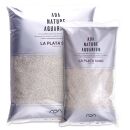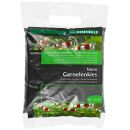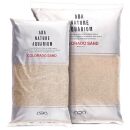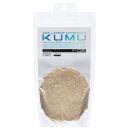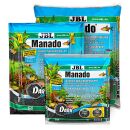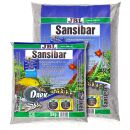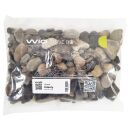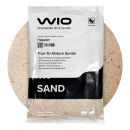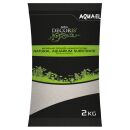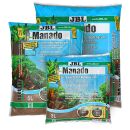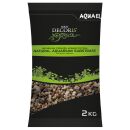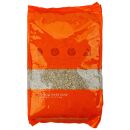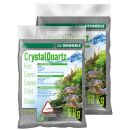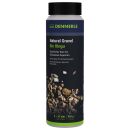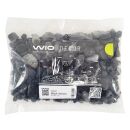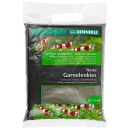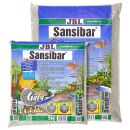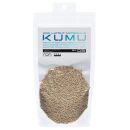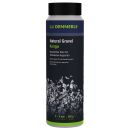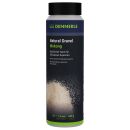- Produces a natural appearance
- Very light-coloured almost white sand
- Reflects the nature of a stream
- Very fine-grained (1-4 mm)
- Grain-size: 0.7 - 1.2 mm
- Black substrate
- No risk of injury due to rounded edges
- Hardener-free, CO2-proof, light-resistant, waterneutral
- Produces a natural appearance
- The warm colour tone suits the aquatic plants perfectly
- Slight reddish colour goes very well with driftwood
- Ivory-coloured decorative sand
- From the ADA KUMU series
- Grain size 0,4 - 0,85 mm
- High impact on GH
- Ideal for aquarium and terrarium layouts
- Water-neutral, dark brown substrate
- Grain size: 1,5 - 2,5 mm
- Ideal for burrowing fish species
- High iron buffer
- Black grey ground material for aquariums
- Very decorative ground material for aquarium and aqua-terrarium
- Grain size: 0,2 - 0,5 mm. Allows the keeping of Corydora
- Not so well suited for undergravel heating cables
- Natural riverbed substrate
- Especially rich in colour
- Can slightly harden the water
- In 3 different grain sizes
- Ideal for riverbed impressions
- Very bright colouring
- 100 % natural origin
- Varied grain size
- Natural soil material
- Creates beautiful contrasts with coloured shrimps
- Extremely fine grain size from 0.1 to 0.3 mm
- Very fine and light quartz sand
- Safe for underwater fish and Caridina shrimp
- Water-neutral, brown substrate
- Grain size: 0,5 - 2,0 mm
- Ideal for fish, invertebrates and plants
- High nutrient buffer
- Natural substrate
- Without artificial additives and coatings
- Multicoloured gravel
- Natural look in the aquarium
- Substrate for aquariums
- Does not change the pH value or water hardness
- Beautiful natural colouring
- Includes different gravel sizes
- Hardener-free
- CO2-proof
- Light-resistant
- Grain size 1-2 mm
- Rounded edges protect bottom-dwelling fish
- Flat, rounded gravel
- From the ADA KUMU series
- Grain size 10 - 40 mm
- High influence on pH & GH
- Ideal for aquarium and terrarium layouts
- Natural colourful gravel
- Grain size 2 - 22 mm
- Light and CO2 resistant
- 100 % natural origin
- Natural riverbed substrate
- Anthracite to black
- Can slightly harden the water
- In 3 different grain sizes
- Ideal in combination with green plants
- Grain-size: 0.7 - 1.2 mm
- Grey substrate
- No risk of injury due to rounded edges
- Hardener-free, CO2-proof, light-resistant, waterneutral
- Grey, fine ground material for aquariums
- Very decorative ground material for aquarium and aqua-terrarium
- Natural Material without any artificial additives
- Grain size: 0,2 - 0,6 mm. Allows the keeping of Corydora
- Not suitable for undergravel heating cables
- Natural dark sand colour
- From the ADA KUMU series
- Grain size 0,4 - 0,85 mm
- Moderate impact on pH
- Ideal for aquarium and terrarium layouts
- Ivory-coloured decorative sand
- From the ADA KUMU series
- Grain size 0,85 - 2 mm
- High impact on GH
- Ideal for aquarium and terrarium layouts
- Almost pure white sand
- From the ADA KUMU series
- Moderate impact GH
- High impact on pH
- Ideal for aquarium and terrarium layouts
- Yellow gravel with colour speckles
- From the ADA KUMU series
- Grain size 2 - 4 mm
- Moderate influence on pH and GH
- Ideal for aquarium and terrarium layouts
- Quarry gravel from slate
- Grain size 3 - 8 mm
- Light and CO2 resistant
- 100 % natural origin
- Fine, bright sand
- Grain size 0,1 - 1,4 mm
- Light and CO2 resistant
- 100 % natural origin
Sand & Gravel - A Matter of Ground
In terrariums, sand and gravel play a crucial role that goes beyond aesthetics. The ground substrate in terrascaping not only serves for visual design but also significantly influences the microclimate and the growth of terrarium plants.
The right use of sand or gravel allows not only the creation of visually natural landscapes but also the regulation of moisture in the terrarium is influenced by the ground base. The fine-grained structure of the sand supports soil drainage and prevents waterlogging, while coarse-grained gravel promotes ventilation and reduces the risk of mold formation.
Moreover, sand and gravel, in combination with hardscape elements like rocks and wood, provide a varied surface for epiphytes, climbing and creeping plants, as well as hiding spots. This creates a natural environment.
When choosing sand and gravel, it's important to consider the individual needs of the plants in the terrarium. Desert plants as well as rainforest species have different requirements for the substrate composition. Therefore, the selection should be carefully matched and regularly reviewed to ensure a permanently optimal environment.
In summary, sand and gravel not only enrich the aesthetic dimension of a terrarium but also play a functional role in creating a balanced habitat. In our terrascaping online shop, numerous options for combining different substrates are offered.


